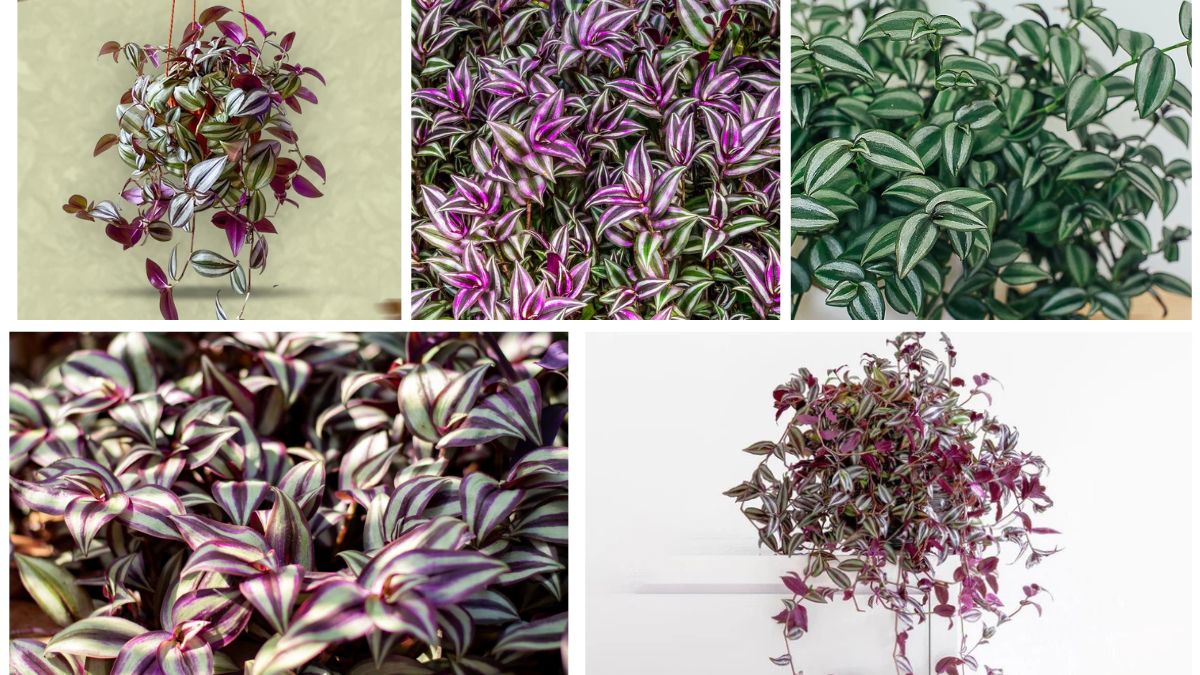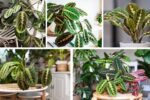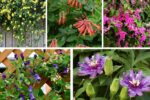Indoor plants are one of the easiest ways to transform your home into a refreshing, lively, and colorful space. Among the most eye-catching options is the Wandering Jew plant, a fast-growing trailing houseplant admired for its vibrant foliage and low-maintenance care. Known scientifically as Tradescantia zebrina and other Tradescantia species, this plant family is well-loved by gardeners for its bold leaves, striking colors, and adaptability.
The Wandering Jew thrives in hanging baskets, planters, or as a ground cover in gardens. Its cascading vines can instantly brighten indoor corners with green, purple, silver, or variegated patterns. What makes it even more attractive is the availability of several unique varieties, each with its own flair.
In this article, we’ll explore five stunning Wandering Jew plant varieties that can add vibrant character to your home and tips on how to care for them.
1. Tradescantia zebrina (Classic Wandering Jew)
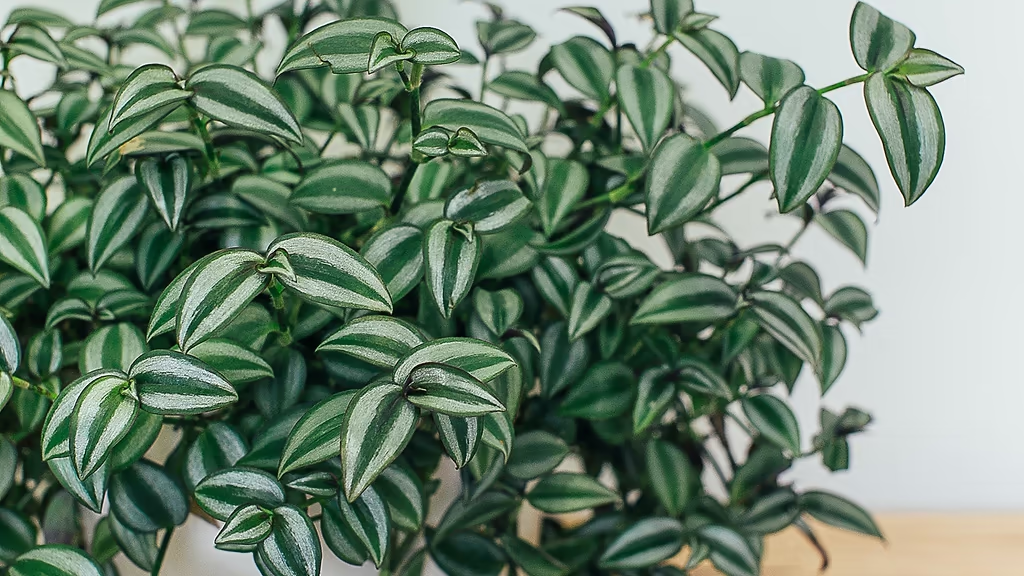
The most popular variety, Tradescantia zebrina, is recognized for its striped leaves of green, silver, and purple. Its name “zebrina” comes from the zebra-like pattern of silvery stripes across its foliage.
- Appearance: The leaves are oval with a glossy finish, featuring purple undersides that stand out beautifully in hanging pots or on shelves where vines can trail down.
- Best Use: Perfect for creating a bold accent in indoor corners or hanging planters. Its striking contrast pairs well with neutral interiors.
- Growth Habit: Fast-growing, reaching up to several feet in length when allowed to trail.
- Care Needs:
- Light: Bright, indirect sunlight keeps the stripes vivid. Too little light will fade the colors.
- Water: Water moderately when the topsoil feels dry. Avoid soggy soil.
- Pruning: Regular trimming encourages bushy, compact growth.
This classic type is ideal for beginners who want the signature Wandering Jew look without complications.
2. Tradescantia fluminensis (Small-Leaf Wandering Jew)
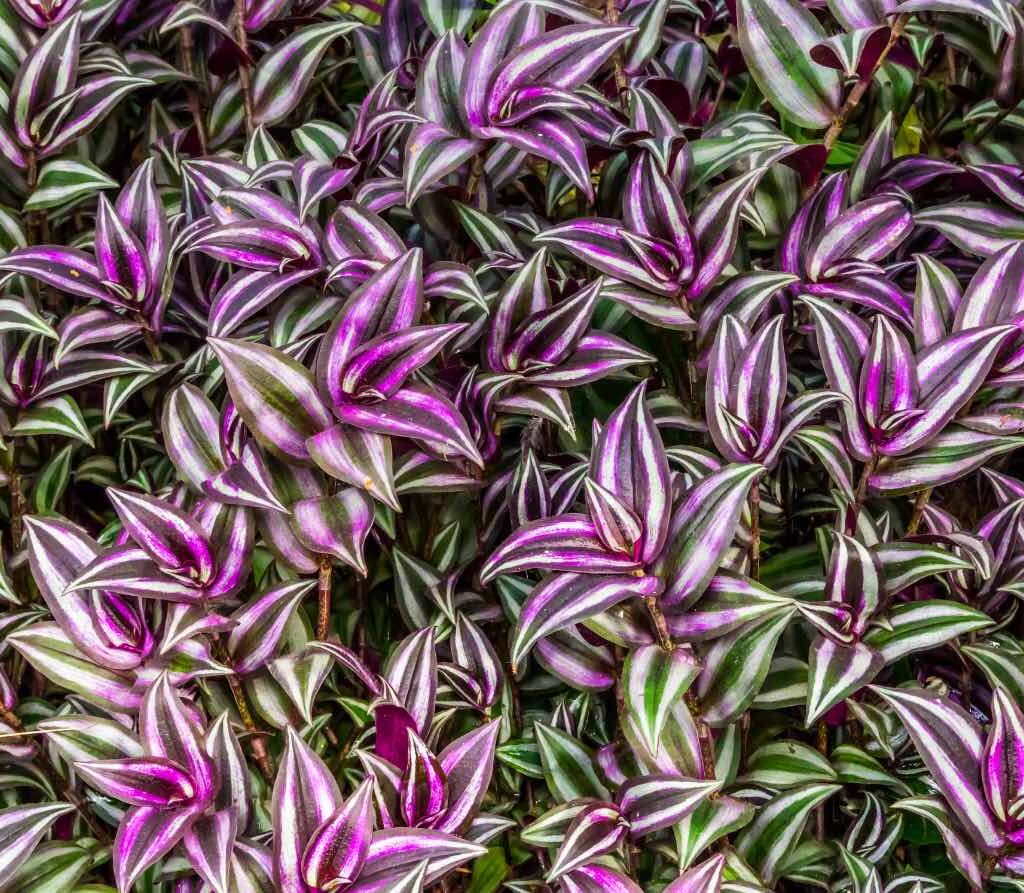
For those who prefer a more delicate touch, Tradescantia fluminensis is an excellent choice. Unlike zebrina, this variety has smaller, glossy green leaves with white or cream variegation, depending on the cultivar.
- Appearance: Its trailing vines carry petite leaves that can be green, white, or a mix of both. The “Variegata” version features creamy white stripes, making it a popular indoor ornamental.
- Best Use: Perfect for tabletops, window sills, or corners where you want subtle, fresh greenery rather than bold colors.
- Growth Habit: More compact and delicate than zebrina, but equally fast-growing.
- Care Needs:
- Light: Thrives in bright light but can tolerate lower conditions. Variegated types need more sunlight to maintain their color.
- Water: Prefers slightly moist soil but not waterlogged.
- Propagation: Very easy—just cut a stem and place it in water or soil.
This variety works well in minimalist or small spaces where you want greenery without overwhelming the décor.
3. Tradescantia pallida (Purple Heart)
If you want a plant with a bold and dramatic flair, the Purple Heart Wandering Jew (Tradescantia pallida) is a showstopper. It’s famous for its deep purple foliage and vibrant pink-purple flowers.
- Appearance: Long, narrow leaves in rich purple shades, sometimes with a metallic sheen. In bright light, the purple color becomes more intense.
- Best Use: A striking plant for bright indoor corners or sunny patios. Its cascading purple vines create a dramatic contrast against white or neutral walls.
- Growth Habit: A trailing vine that can spread widely, making it great for hanging baskets. Outdoors in warmer climates, it is often used as ground cover.
- Care Needs:
- Light: Prefers bright sunlight to keep the purple vibrant.
- Water: Moderate watering—let soil dry slightly between waterings.
- Temperature: Warm, humid environments suit it best, making it excellent for tropical-themed interiors.
This variety adds a pop of bold color and works beautifully as a centerpiece plant indoors.
4. Tradescantia spathacea (Moses-in-the-Cradle)
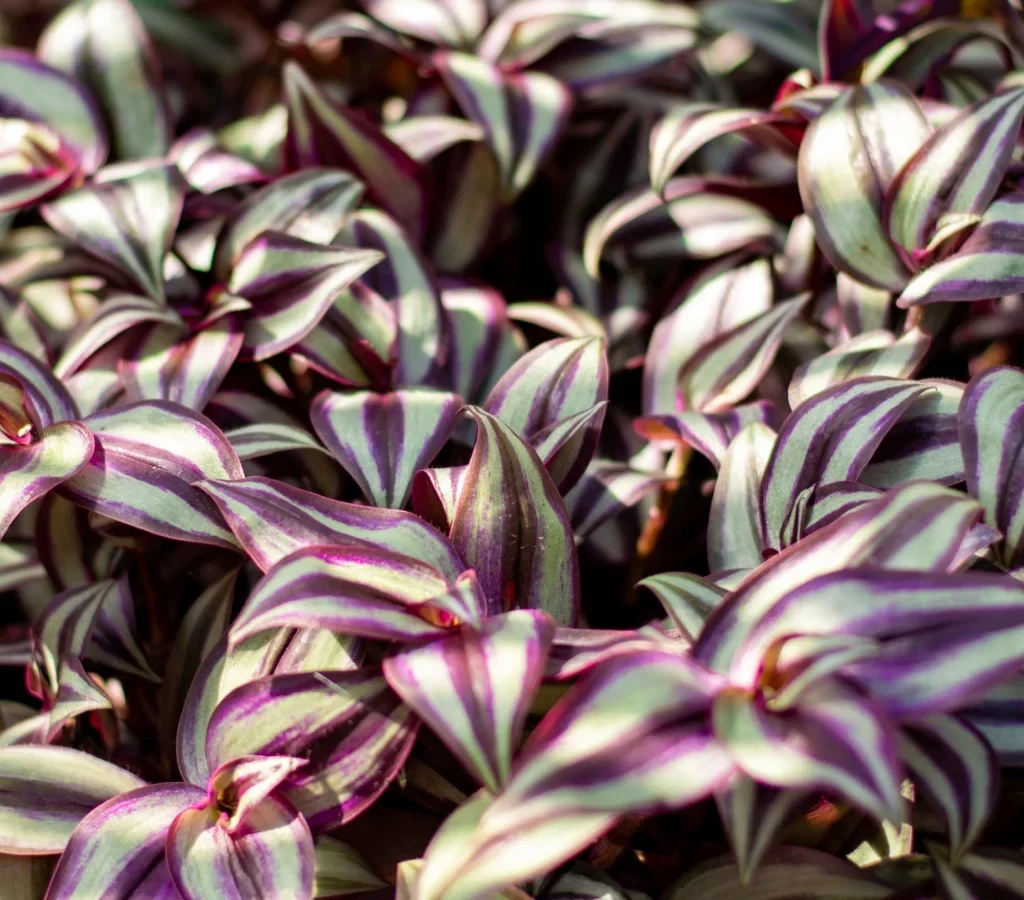
Also known as Boat Lily or Moses-in-the-Cradle, this variety has an upright growth habit compared to the trailing vines of other Wandering Jews.
- Appearance: The leaves are long and sword-shaped, green on top with vivid purple undersides. It produces small, white flowers nestled inside purple bracts, resembling a cradle—hence the name.
- Best Use: Ideal for indoor pots where you want height instead of trailing growth. Great for corners, entryways, or as a focal plant in a collection.
- Growth Habit: Grows in clumps rather than trails, giving it a more structured, upright form.
- Care Needs:
- Light: Prefers bright, indirect light but tolerates medium light conditions.
- Water: Water when the top inch of soil feels dry. Avoid overwatering.
- Maintenance: Very hardy and easy to grow, making it beginner-friendly.
This unique variety offers a different growth form, perfect for those who want to diversify their plant collection.
5. Tradescantia ‘Nanouk’
A newer hybrid variety, Tradescantia ‘Nanouk’, has quickly gained popularity for its stunning pastel colors and easy care.
- Appearance: Wide, thick leaves with shades of pink, purple, green, and white. The combination of pastel stripes makes it one of the most visually striking Wandering Jew varieties.
- Best Use: A trendy indoor plant often used as a decorative centerpiece. Its trailing vines make it great for shelves and hanging baskets.
- Growth Habit: Compact but vigorous, with thicker stems compared to other varieties.
- Care Needs:
- Light: Needs bright, indirect light to maintain its pastel variegation.
- Water: Water moderately and allow soil to partially dry out between watering.
- Humidity: Appreciates higher humidity but tolerates normal indoor conditions well.
The ‘Nanouk’ is a favorite among plant enthusiasts for its Instagram-worthy look and resilience.
General Care Tips for Wandering Jew Plants
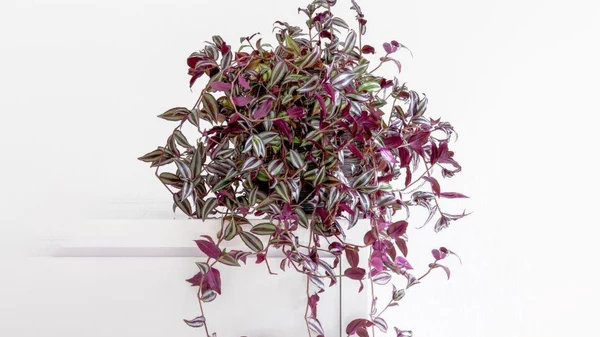
No matter which variety you choose, Wandering Jew plants are generally easy to care for. Here are some universal tips:
- Light: Most varieties thrive in bright, indirect sunlight. Too much direct light can scorch leaves, while low light causes colors to fade.
- Watering: Keep the soil moderately moist. Overwatering leads to root rot, so let the top inch of soil dry before watering again.
- Humidity: These plants love humidity. Mist leaves occasionally or place them near a humidifier.
- Pruning: Trim back long stems to encourage bushier growth and prevent legginess.
- Propagation: Very easy—just cut a stem and place it in water or directly in soil. Within weeks, new roots will form.
Conclusion
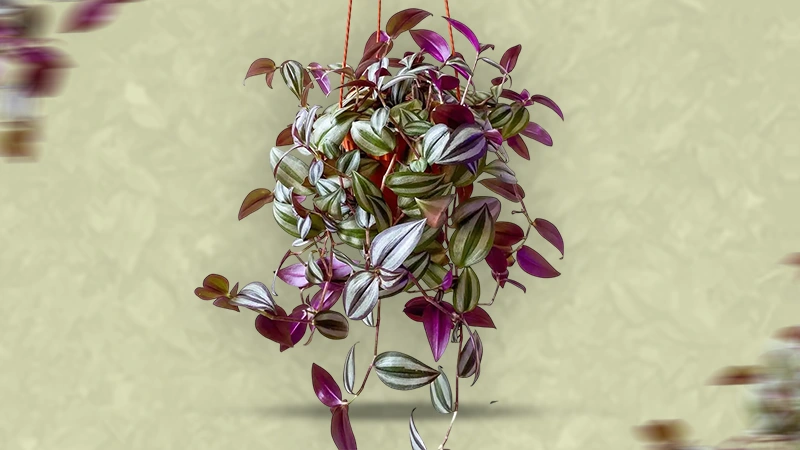
The Wandering Jew plant family offers a wide range of varieties, each bringing its own unique beauty to indoor spaces. Whether you love the bold stripes of Tradescantia zebrina, the delicate charm of fluminensis, the dramatic hues of Purple Heart, the upright elegance of spathacea, or the pastel vibrance of Nanouk, there’s a perfect choice for every style.
By placing these plants in indoor corners, hanging baskets, or decorative pots, you can easily add life, color, and charm to your home. With minimal care requirements and endless propagation possibilities, Wandering Jew plants are both beginner-friendly and rewarding.
So, if you’re looking for a way to upgrade your indoor corners, start with one—or more—of these five stunning Wandering Jew varieties, and enjoy a colorful, thriving indoor garden.
